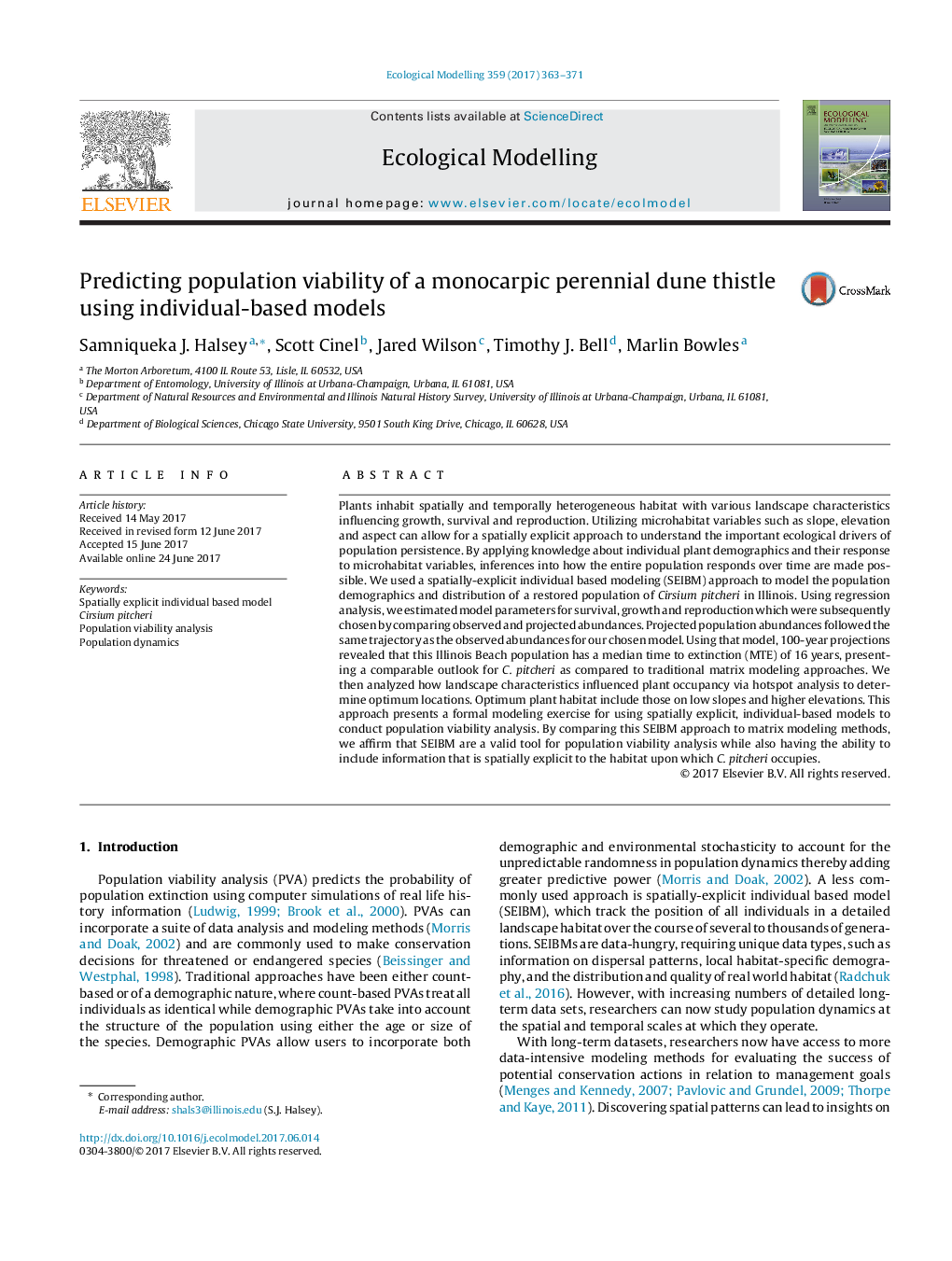| Article ID | Journal | Published Year | Pages | File Type |
|---|---|---|---|---|
| 5742147 | Ecological Modelling | 2017 | 9 Pages |
â¢Spatially explicit individual based model can be used for population viability analysis.â¢SEIBM results are comparable to traditional matrix modeling approaches.â¢Differences in slope, elevation and aspect influence population persistence.â¢SEIBMs allow for identification and visualization of optimum habitat.
Plants inhabit spatially and temporally heterogeneous habitat with various landscape characteristics influencing growth, survival and reproduction. Utilizing microhabitat variables such as slope, elevation and aspect can allow for a spatially explicit approach to understand the important ecological drivers of population persistence. By applying knowledge about individual plant demographics and their response to microhabitat variables, inferences into how the entire population responds over time are made possible. We used a spatially-explicit individual based modeling (SEIBM) approach to model the population demographics and distribution of a restored population of Cirsium pitcheri in Illinois. Using regression analysis, we estimated model parameters for survival, growth and reproduction which were subsequently chosen by comparing observed and projected abundances. Projected population abundances followed the same trajectory as the observed abundances for our chosen model. Using that model, 100-year projections revealed that this Illinois Beach population has a median time to extinction (MTE) of 16 years, presenting a comparable outlook for C. pitcheri as compared to traditional matrix modeling approaches. We then analyzed how landscape characteristics influenced plant occupancy via hotspot analysis to determine optimum locations. Optimum plant habitat include those on low slopes and higher elevations. This approach presents a formal modeling exercise for using spatially explicit, individual-based models to conduct population viability analysis. By comparing this SEIBM approach to matrix modeling methods, we affirm that SEIBM are a valid tool for population viability analysis while also having the ability to include information that is spatially explicit to the habitat upon which C. pitcheri occupies.
